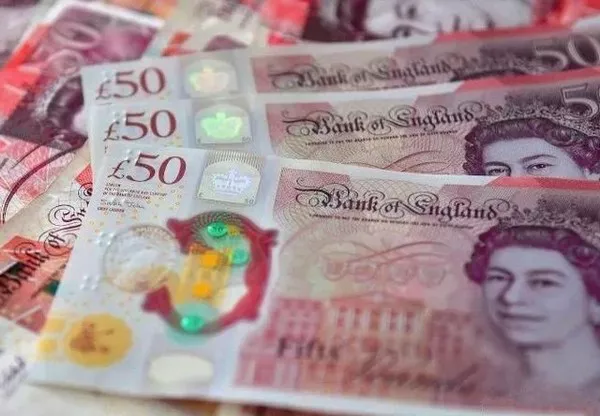The Brexit referendum in 2016, where the United Kingdom voted to leave the European Union, marked a pivotal moment in modern British history. It also had significant consequences for the British pound sterling (GBP). This article delves into the multifaceted impact of the Brexit referendum on the GBP, exploring its immediate fluctuations, economic repercussions, and ongoing challenges in the world of international finance.
Immediate Reactions: The Pound’s Rollercoaster Ride
The announcement of the Brexit referendum results on June 24, 2016, sent shockwaves through financial markets, leading to a series of immediate reactions in the currency markets:
Sharp Depreciation: The GBP experienced a sharp and rapid depreciation against major currencies, most notably the US dollar (USD) and the euro (EUR). In the hours following the referendum, the pound hit its lowest level against the dollar in more than three decades.
Market Volatility: Currency markets were engulfed in heightened volatility, with wild intraday swings in the pound’s value. Traders and investors grappled with uncertainty and the unexpected outcome.
Safe-Haven Currencies: Investors sought refuge in safe-haven currencies like the Japanese yen and the Swiss franc, exacerbating the pound’s decline.
Global Impact: The GBP’s tumble sent ripples across global financial markets, affecting not only currencies but also stock markets and commodities.
Economic Impact: Uncertainty and Adjustment Period
The Brexit vote triggered a period of economic uncertainty and adjustment, which had a profound impact on the GBP:
Business Uncertainty: The uncertainty surrounding the UK’s future relationship with the EU led many businesses to delay investment decisions and expansion plans. This cautious approach affected economic growth and weighed on the pound.
Trade Concerns: Questions about the UK’s ability to negotiate favorable trade agreements post-Brexit raised concerns about the future of the country’s trade relationships. Trade is a significant driver of currency movements, and these uncertainties influenced the GBP.
Investor Sentiment: Investor sentiment towards the UK became more cautious, with foreign direct investment (FDI) slowing down as investors awaited clarity on the post-Brexit landscape.
Inflation Pressures: The pound’s depreciation contributed to rising import costs, which, in turn, led to higher inflation. This put pressure on consumers’ purchasing power and the Bank of England’s monetary policy decisions.
Brexit Negotiations and Political Uncertainty
The period following the referendum was marked by protracted negotiations between the UK and the EU, resulting in multiple extensions of the withdrawal deadline and heightened political uncertainty:
Extension Drama: The uncertainty surrounding the Brexit process led to several extensions of the withdrawal deadline. Each extension brought with it a degree of uncertainty, impacting the pound’s value.
Political Instability: The UK saw changes in leadership, with Theresa May stepping down as Prime Minister and Boris Johnson assuming office. Political developments and leadership changes added to the uncertainty.
Parliamentary Battles: Battles in the UK Parliament over the terms of the withdrawal agreement further heightened uncertainty. These political clashes were closely monitored by currency markets.
Sterling’s Resilience and Rally
Despite the ongoing challenges and uncertainties, the GBP displayed resilience and even staged a rally at certain points:
Market Sentiment Shifts: The pound’s value was influenced by shifts in market sentiment, which were often driven by developments in the negotiations or political events.
Resolution of Some Issues: As certain aspects of the Brexit negotiations were resolved, such as the withdrawal agreement and the Northern Ireland Protocol, the pound saw periods of stability and even appreciation.
Investor Positioning: Some investors adopted a contrarian view and bet on a stronger pound, leading to short-term rallies.
Post-Brexit Landscape: Ongoing Challenges
The GBP continues to face challenges in the post-Brexit landscape:
Trade Agreements: The UK’s ability to negotiate and secure favorable trade agreements with the EU and other countries remains a critical factor for the pound’s performance.
Economic Recovery: The pace and strength of the UK’s economic recovery, particularly in the wake of the COVID-19 pandemic, will influence the pound’s value.
Inflation and Monetary Policy: The Bank of England’s response to inflationary pressures and its monetary policy decisions will be closely watched by currency markets.
Global Factors: The GBP’s value is influenced not only by Brexit-related developments but also by global factors such as central bank policies, global economic trends, and geopolitical events.
Conclusion
The Brexit referendum in 2016 had a profound and lasting impact on the British pound sterling. From the immediate post-referendum depreciation to the ongoing uncertainties surrounding trade agreements and economic recovery, the GBP has navigated a challenging path. Its resilience and capacity to rally in response to changing market sentiment reflect the complexity of factors influencing currency movements.
As the UK continues to forge its path outside the European Union, the pound’s role in international finance remains crucial. Its performance will be closely watched by traders, investors, businesses, and policymakers, and its fluctuations will continue to be a barometer of global sentiment and economic prospects in the post-Brexit era.


